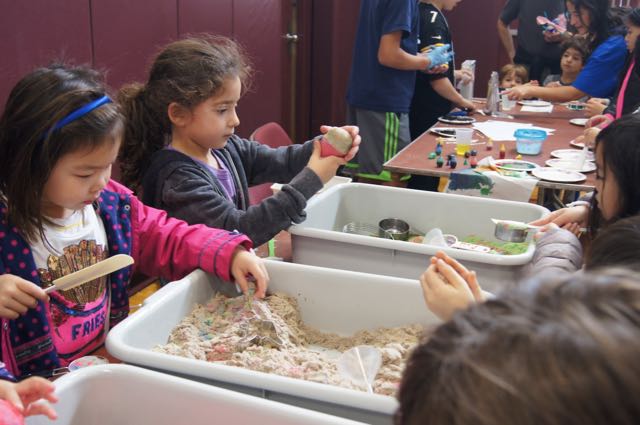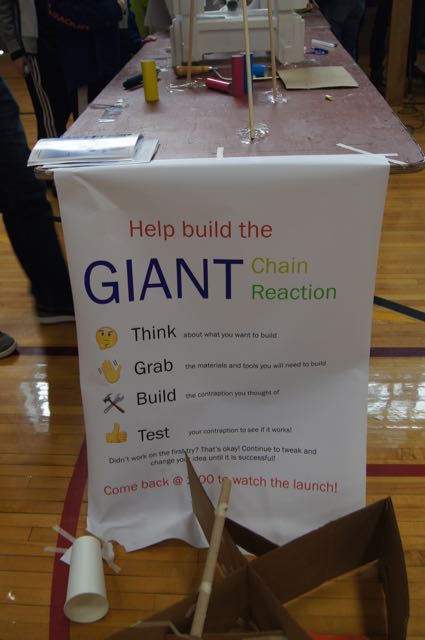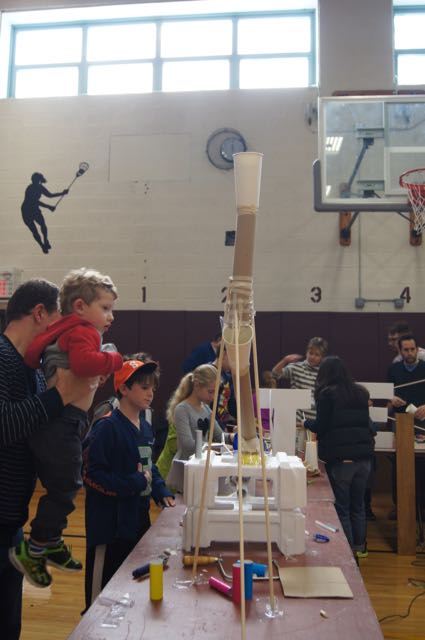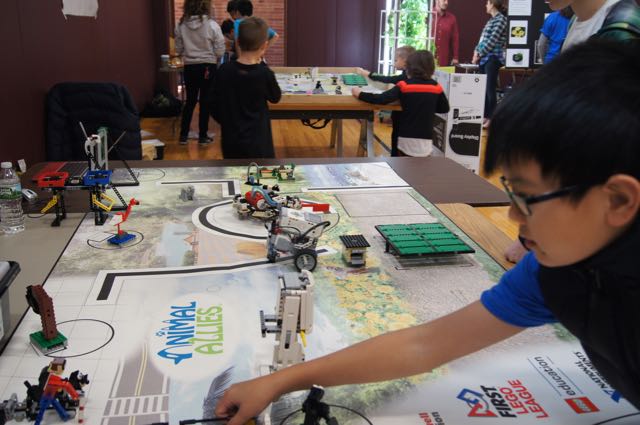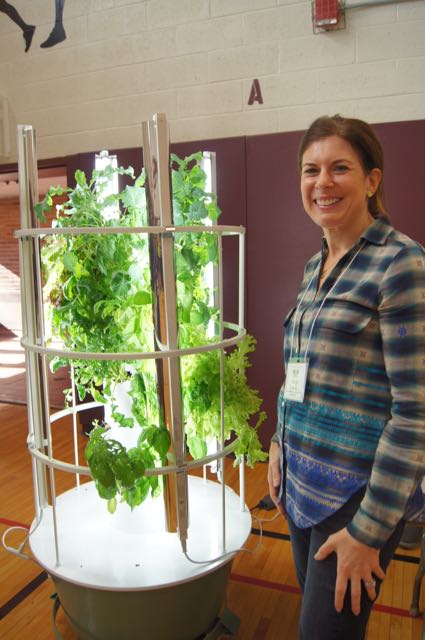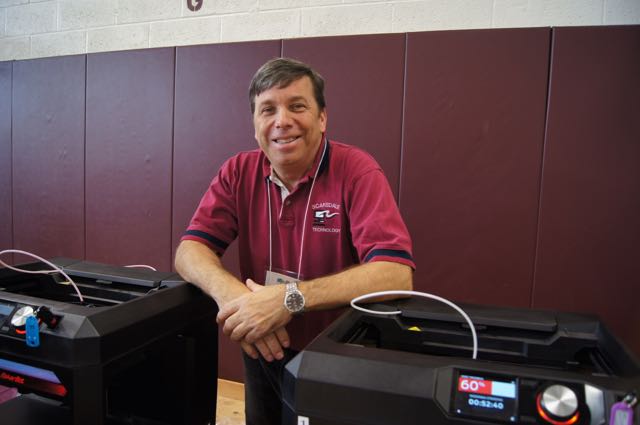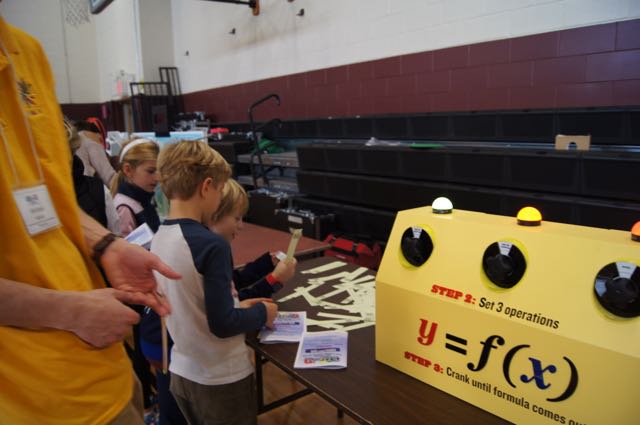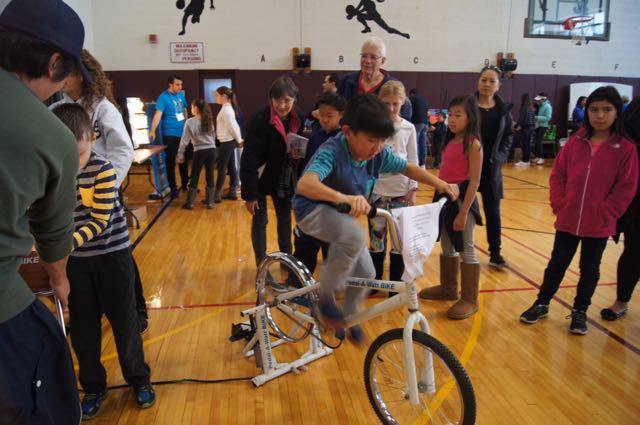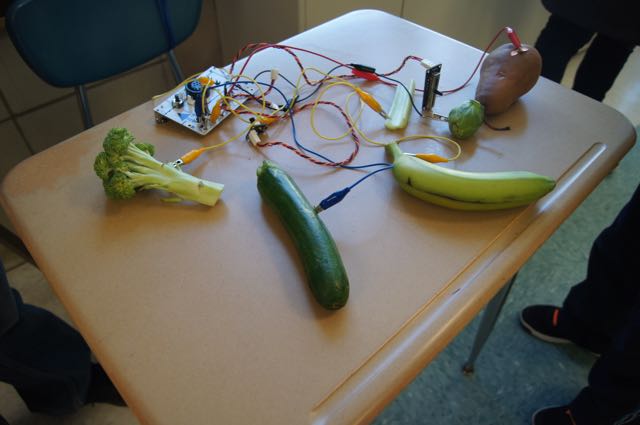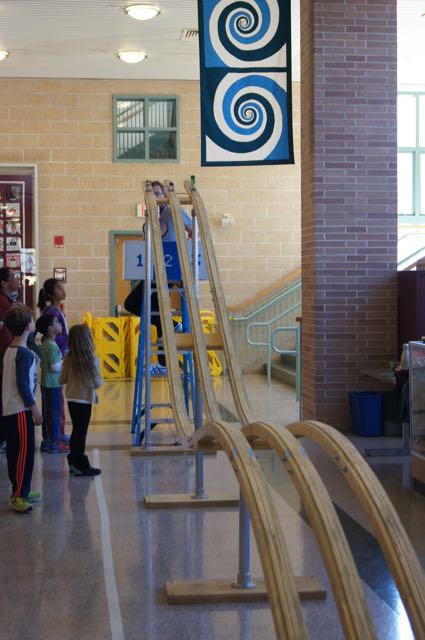Scarsdale Resident Launches Nanny Tax Solutions for Household Employers
- Details
- Written by: Joanne Wallenstein
- Hits: 6600
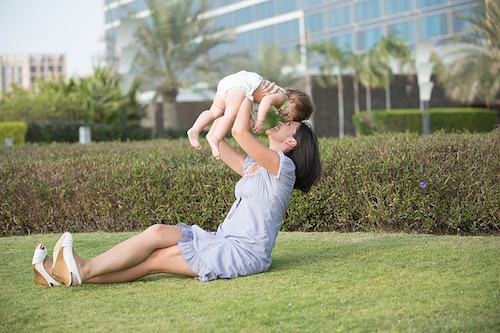 When attorney and CPA Chandra Nottage moved to Scarsdale four years ago, she needed someone to care for her daughter while she went to work. Even though most of the working parents she met in the area hire nannies, leaving her infant daughter with a stranger all day without supervision was a scary thought and not something she was willing to do. There were not many institutional childcare options available for children under 18 months and she found that for most working parents a nanny was the only viable option. Chandra did, however, find a childcare center in walking distance from her home. But, when her daughter needed surgery on her feet, they lost the space when she couldn't be enrolled when it became available. A part-time space was later offered, but the remaining days needed to be supplemented with a nanny. Suddenly, she and her husband found themselves to be household employers.
When attorney and CPA Chandra Nottage moved to Scarsdale four years ago, she needed someone to care for her daughter while she went to work. Even though most of the working parents she met in the area hire nannies, leaving her infant daughter with a stranger all day without supervision was a scary thought and not something she was willing to do. There were not many institutional childcare options available for children under 18 months and she found that for most working parents a nanny was the only viable option. Chandra did, however, find a childcare center in walking distance from her home. But, when her daughter needed surgery on her feet, they lost the space when she couldn't be enrolled when it became available. A part-time space was later offered, but the remaining days needed to be supplemented with a nanny. Suddenly, she and her husband found themselves to be household employers.
Chandra quickly realized that Scarsdale is rife with household employers but there were no payroll services for this type of employment. So when she left her position at a Big Four" accounting firm after seven years, she decided to start Nanny Tax Solutions offering payroll services to both household employers and small businesses with an average of 10 employees.
Household employers include individuals who employ nannies, gardeners, housekeepers, home health aides, babysitters or drivers, to name a few.
Employing a nanny who is paid more than $2,000 for the 2016 tax year immediately makes a family a household employer responsible for complying with payroll tax requirements. Some household employers may file their own taxes at the end of the year and may not have an accountant. Other household employers or small businesses that already have an accountant may not have one that will help with the weekly payroll. These employers often do not have the same resources as larger employers, and processing payroll in-house can be burdensome. Hiring outside help is necessary for small employers, but Nanny Tax Solutions recognizes that they also need to keep costs low. Therefore, employers can customize their payroll services and can choose how much they want to remain involved. Clients can use Nanny Tax Solutions to issue wage payments to employees every payroll period, to file quarterly and annual payroll tax filings, and to help with the numerous other compliance matters. Employers can choose to use Nanny Tax Solutions for some or all of these services.
Nanny Tax Solutions is located in Hawthorne, New York,  but services employers nationwide. Meeting the needs of clients is the company's number one priority; and although there are standard office hours, appointments can be made outside of those hours when necessary to accommodate an employer's schedule. Call Chandra Nottage at Nanny Tax Solutions at (914) 214-5762 or send an email to: contact@nannytaxsolutions.com to get started today.
but services employers nationwide. Meeting the needs of clients is the company's number one priority; and although there are standard office hours, appointments can be made outside of those hours when necessary to accommodate an employer's schedule. Call Chandra Nottage at Nanny Tax Solutions at (914) 214-5762 or send an email to: contact@nannytaxsolutions.com to get started today.
Panelists Shine the Light on a Taboo Subject
- Details
- Written by: Josie Blatt
- Hits: 5072
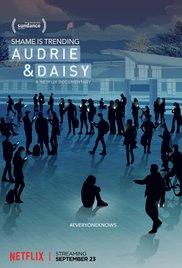 More than 100 community members gathered on Thursday night November 30 to discuss a sensitive issue that most shy away from confronting: sexual assault. The evening featured a panel discussion and viewing of excerpts from the film "Audrie and Daisie" and was co-sponsored by the Scarsdale High School PTA, Scarsdale Edgemont Family Counseling Services, and the Scarsdale Coalition on Family Violence. The discussion was moderated by New York State Assemblywoman Amy Paulin. On the panel were Kristen Bowes, General Counsel and Title IX Coordinator at Mercy College; Jennifer Snow, Board Chair of Students Active For Ending Rape (SAFER); and Katie Cappiello, founder of The Arts Effect NYC and author of "SLUT: A Play and Guidebook for Combating Sexism and Sexual Violence."
More than 100 community members gathered on Thursday night November 30 to discuss a sensitive issue that most shy away from confronting: sexual assault. The evening featured a panel discussion and viewing of excerpts from the film "Audrie and Daisie" and was co-sponsored by the Scarsdale High School PTA, Scarsdale Edgemont Family Counseling Services, and the Scarsdale Coalition on Family Violence. The discussion was moderated by New York State Assemblywoman Amy Paulin. On the panel were Kristen Bowes, General Counsel and Title IX Coordinator at Mercy College; Jennifer Snow, Board Chair of Students Active For Ending Rape (SAFER); and Katie Cappiello, founder of The Arts Effect NYC and author of "SLUT: A Play and Guidebook for Combating Sexism and Sexual Violence."
The film follows several high-school girls who have been sexually assaulted, specifically Audrie Pott and Daisy Coleman. While the girls suffered the backlash of their assaults, Pott even took her own life, their perpetrators received little punishment. The documentary was not shown in its entirety, rather, various clips were shown followed by questions from the audience and discussion from the panel. If you are interested in seeing the film, "Audrie and Daisy" is available on Netflix.
Themes discussed by the panel included: the impact of social media and bystanders, what does consent mean, education on sexual assault for high school and college students, education starting as early as Kindergarten, the impact of drugs and alcohol on sexual assault, how colleges handle sexual assault, and sexual assaults in which men are the victims.
Each panelist's passion for the issue shone through. Paulin has a personal attachment to the issue and she described the importance of being honest about your experiences: "I never told anyone until I told the entire New York State Assembly when I wanted them to pass a bill."
Panelist Kristen Bowes responded to a question asking how society treats men who come out about their stories as victims of sexual assault: "We try as best as we can on our campus to make it clear that discrimination against men is absolutely prohibited, and we try to be as open and inclusive as possible, but it is still a challenge. I even find myself when I do training to talk about the victim as 'she, she, she' and I have to catch myself all the time, so I know that we have to do the work but I know that we have our resources lined up if men come forward on our campus." The other panelists added that sexual assault against men is less common and prevalent, therefore it is harder for them to be open about their stories, but there are things being done to improve that.
Panelist Jennifer Snow explained several tips for college freshmen and prospective college students. Snow advised, "A good thing to ask on your college tour is 'what do you do about sexual assault on your campus?' New York and California are at the very top of this whole movement to try and combat sexual assault on college campuses. In other states you could have absolutely nothing, they could literally never say the words sexual assault in freshman orientation. In fact, I would say that's more of the norm than the exception."
Panelist Katie Cappiello explained: "How amazing would it be if conversations about consent, and about respect, and about engaging with one another in terms of all of these things started, and I know that this sounds scary, but there's a way that we can do it where we don't have to talk about it this in depth, but in Kindergarten. Like 'Hey, can I give you a hug? No? Okay!' You know that cute story that everyone has about the guy who chases the girl around the playground in Kindergarten and then pins her behind a tree and kisses her and it's so cute? It's not. And the little girl's crying isn't that funny? No, it's horrible." The importance of educating children about sexual assault early, was emphasized throughout the event.
The audience consisted largely of parents and students. Specifically, peer leaders and civ-ed advisors at SHS were encouraged to attend. However, some students, like Mollie Kerr 17', attended because of their passion for this issue. Kerr expressed, "I think that it's upsetting that we would have an assembly about drunk driving, underage drinking, or speeding while driving, that's mandatory, while sexual assault is a lot more common and prevalent and we haven't had an assembly on it." Kerr is working with Vice Principal Griffin and Youth Outreach Worker Lauren Pomerantz to educate every grade, specifically freshmen and seniors, in their own individual ways on consent and sexual assault.
If high school students want to learn more, have concerns, or wish to report an incident of sexual assault, the youth outreach workers and psychologists are a good place to start, and are always there. Scarsdale Edgemont Family Counseling Services is also available to parents and other members of the community, for help.
STEAM Day Makes Math and Science Fun for 700 Participants
- Details
- Written by: Joanne Wallenstein
- Hits: 6235
 The Scarsdale Middle School was awhirl in activity on STEAM Day on Saturday November 19 when the PT Council in collaboration with the school PTA's, teachers, district administrators and the Scarsdale Schools Education Foundation produced an ambitious day of STEAM activities and workshops for kids of all ages.
The Scarsdale Middle School was awhirl in activity on STEAM Day on Saturday November 19 when the PT Council in collaboration with the school PTA's, teachers, district administrators and the Scarsdale Schools Education Foundation produced an ambitious day of STEAM activities and workshops for kids of all ages.
The program was expanded this year to include workshops for 4th through 8th graders, as well as engaging activities for the younger set, and whole families spent an entertaining day learning about robotics, genetics, circuits, 3D printing, coding and building a giant contraption to create a chain reaction. Kids were on the floor building and even de-constructing complex machines. Over 700 kids and parents attended.
The Discovery Room in Gyms A and B and the Makerspace in Gyms C and D offered opportunities for all students, while older students attended a series of workshops that turned science and math into fun. Fox Meadow Principal Duncan Wilson presented his own version of "Escape the Room," challenging students to use logic and math to piece together clues to open locks and solve a crime. Other workshops involved building a model of a skyscraper, building a model airplane that actually flies and creating color-changing chemical reactions. There was more on coding, probability and even relative time travel.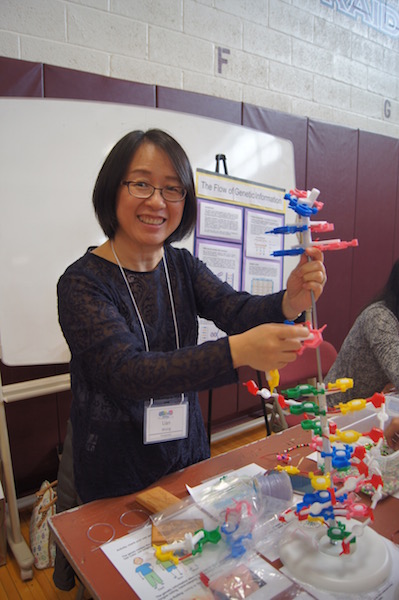
In the Great Hall at the upper entrance to the school, Nerdy Derby constructed a fifty foot race track, where kids raced cars they built by themselves. RFID chips were attached to each car so that the owner knew when it crossed the finish line. This activity was funded by a grant from the Scarsdale Schools Education Foundation.
The day concluded with Jeff Boyer's Bubble Trouble show which combined creative and crazy bubble feats with a lesson in the science behind bubbles. The SMS auditorium was filled with kids, parents and teachers.
Everywhere you looked, kids were engaged and excited, demonstrating how making and doing creates memorable educational experiences.
Commenting on the day, Event Co-Chairs Kathleen Campbell and Seema Jaggi said, "The attendance exceeded our expectations. The feedback has been very positive, and we were so pleased that the community responded to the opportunity to attend the event as a family. We were fortunate to have an excellent and dedicated corps of parent volunteers on the planning committee, working together with the support of faculty, administration and staff on every level. We also had the very generous financial support of the Scarsdale Schools Education Foundation and many donations-in-kind from workshop leaders and presenters, enabling the PT Council STEAM Committee to bring quality programming and activities to the event."
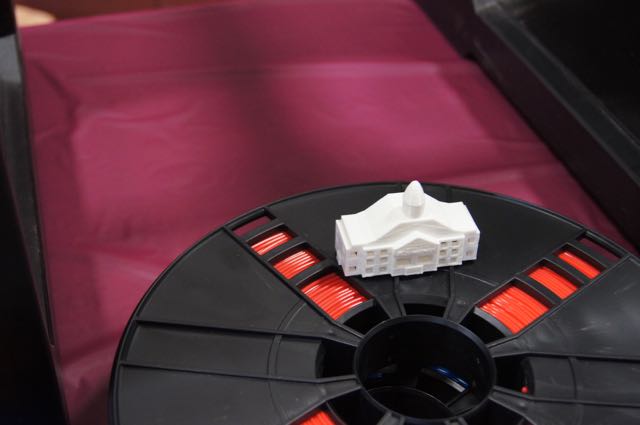 They thanked everyone, saying, "We had an amazing committee of women working on this. We cannot say enough about the dedication of these women to bringing a quality program to the entire community. I think that is something that people don't necessarily appreciate - that this event was staffed, planned, and executed almost entirely by volunteers. The District was also very generous in its permissive use of the Middle School, its Technology Team and the outstanding and professional help of the SMS custodians led by Rob Schweit. Those SMS custodians are absolutely THE BEST!! They make it happen with a smile."
They thanked everyone, saying, "We had an amazing committee of women working on this. We cannot say enough about the dedication of these women to bringing a quality program to the entire community. I think that is something that people don't necessarily appreciate - that this event was staffed, planned, and executed almost entirely by volunteers. The District was also very generous in its permissive use of the Middle School, its Technology Team and the outstanding and professional help of the SMS custodians led by Rob Schweit. Those SMS custodians are absolutely THE BEST!! They make it happen with a smile."
Scarsdale Schools: Student Testing, Water Safety and New Health Policies
- Details
- Written by: Heather Gilchriest Meili
- Hits: 7496
 Though dominated by construction and finance issues, the November 14 Scarsdale School Board meeting also included important information about student test results plus a report on water safety and new policies on head lice and concussions.
Though dominated by construction and finance issues, the November 14 Scarsdale School Board meeting also included important information about student test results plus a report on water safety and new policies on head lice and concussions.
Student Testing
Superintendent Thomas Hagerman turned the meeting back to "our core mission of teaching and learning" by introducing the "Student Assessment in Scarsdale Schools" report from Assistant Superintendent for Instruction Lynn Shain. In Ms. Shain's clear and thoughtful report (available for reading in full on the District website), she first placed Assessment in context as "one of the three, integral facets of the teaching and learning cycle along with curriculum and instruction," playing an essential role in allowing teachers to pinpoint students' needs, improve their instruction, and even adjust the curriculum to ensure the best learning outcomes.
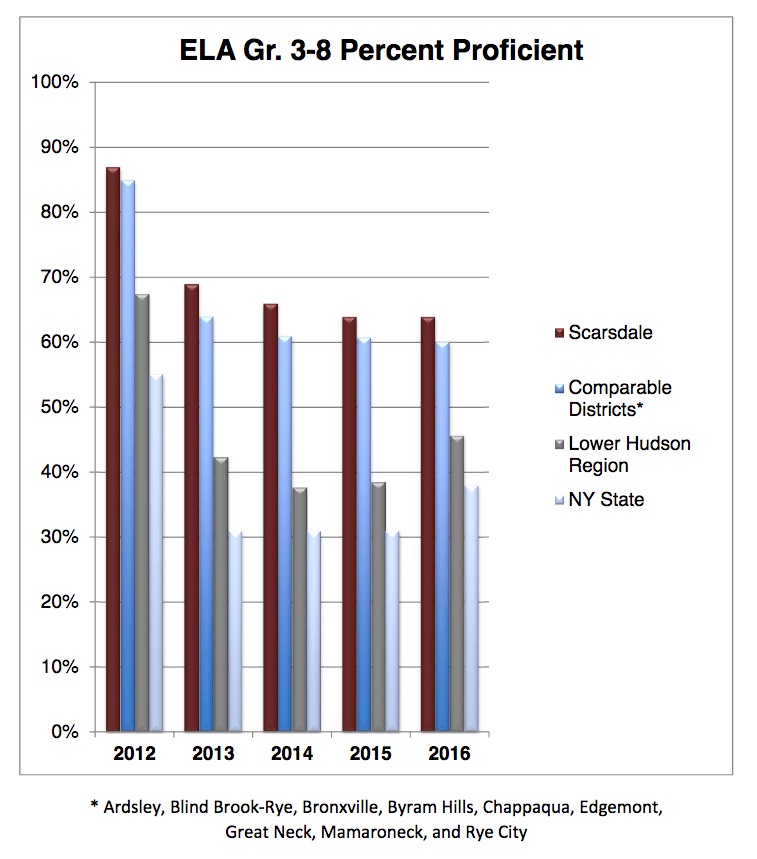 Next, Ms. Shain addressed a point of annual concern to parents: standardized testing. She emphasized that standardized testing is only one small piece of the broader, continuous assessment that occurs throughout the school year. It is the view of the district that "the best assessment of a student's achievement is still classroom performance as judged by a teacher who sees the student's work in a variety of situations over the course of a school year." As a "snapshot in time," standardized testing provides limited information which is less useful in terms of gauging individual students, although it can be of use for viewing District achievement over time.
Next, Ms. Shain addressed a point of annual concern to parents: standardized testing. She emphasized that standardized testing is only one small piece of the broader, continuous assessment that occurs throughout the school year. It is the view of the district that "the best assessment of a student's achievement is still classroom performance as judged by a teacher who sees the student's work in a variety of situations over the course of a school year." As a "snapshot in time," standardized testing provides limited information which is less useful in terms of gauging individual students, although it can be of use for viewing District achievement over time.
Digging deeper into a topic raised earlier this fall with the release of the 2015-2016 State Test results, Ms. Shain flagged a concern with those results. She explained that standardized tests fall into one of two categories: Norm-referenced Tests (e.g., SATs), and Criterion-referenced Tests (e.g. NYS Regents exams). The first type provides a score that compares a student's performance to that of students in a sample of peers. The second compares a student's performance to specific standards regardless of other examinees' scores. Parents should be aware that the current state tests "create a hybrid of these types causing major concerns about the accuracy and value of this data." In essence, they treat a Criterion test as if it were a Norm-Referenced test - a "mixed metaphor" - which is why this year's test results were issued with a letter from Ms. Shain urging parents not to place too much emphasis on the "ranking" shown on the results page. She noted that, fortunately, "most of our community understands the shortcomings of standardized tests."
this fall with the release of the 2015-2016 State Test results, Ms. Shain flagged a concern with those results. She explained that standardized tests fall into one of two categories: Norm-referenced Tests (e.g., SATs), and Criterion-referenced Tests (e.g. NYS Regents exams). The first type provides a score that compares a student's performance to that of students in a sample of peers. The second compares a student's performance to specific standards regardless of other examinees' scores. Parents should be aware that the current state tests "create a hybrid of these types causing major concerns about the accuracy and value of this data." In essence, they treat a Criterion test as if it were a Norm-Referenced test - a "mixed metaphor" - which is why this year's test results were issued with a letter from Ms. Shain urging parents not to place too much emphasis on the "ranking" shown on the results page. She noted that, fortunately, "most of our community understands the shortcomings of standardized tests."
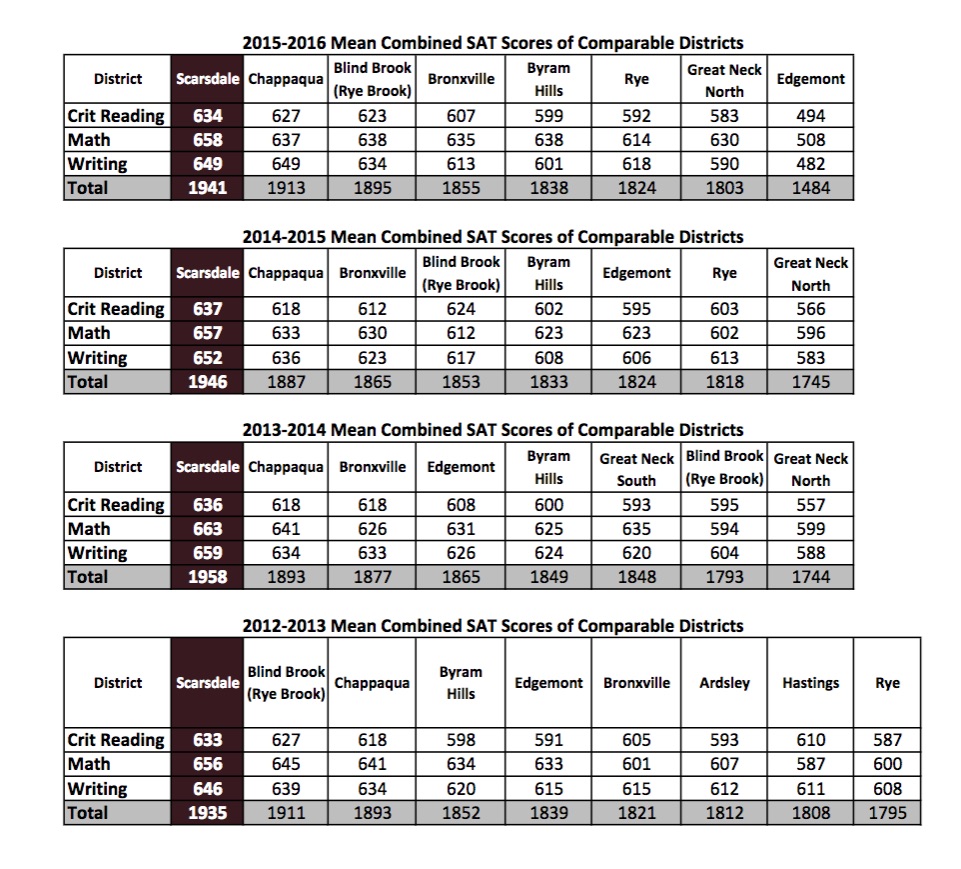 Nonetheless, standardized test results and other data do bring good news for Scarsdale students and the families who are investing in their educations here.
Nonetheless, standardized test results and other data do bring good news for Scarsdale students and the families who are investing in their educations here.
Despite the shortcomings of the NY State Tests, and the "dips" in scores that occurred statewide as the tests were adjusted and the bar raised in both 2009 and 2012, the charts above show Scarsdale 3rd-8th grade students performing consistently ahead of students in comparable districts, the lower Hudson region, and the state overall.
The news is equally good looking at high school level results. One example among many are Scarsdale's SAT scores, which have been the highest among comparable districts in the region for the last four years.
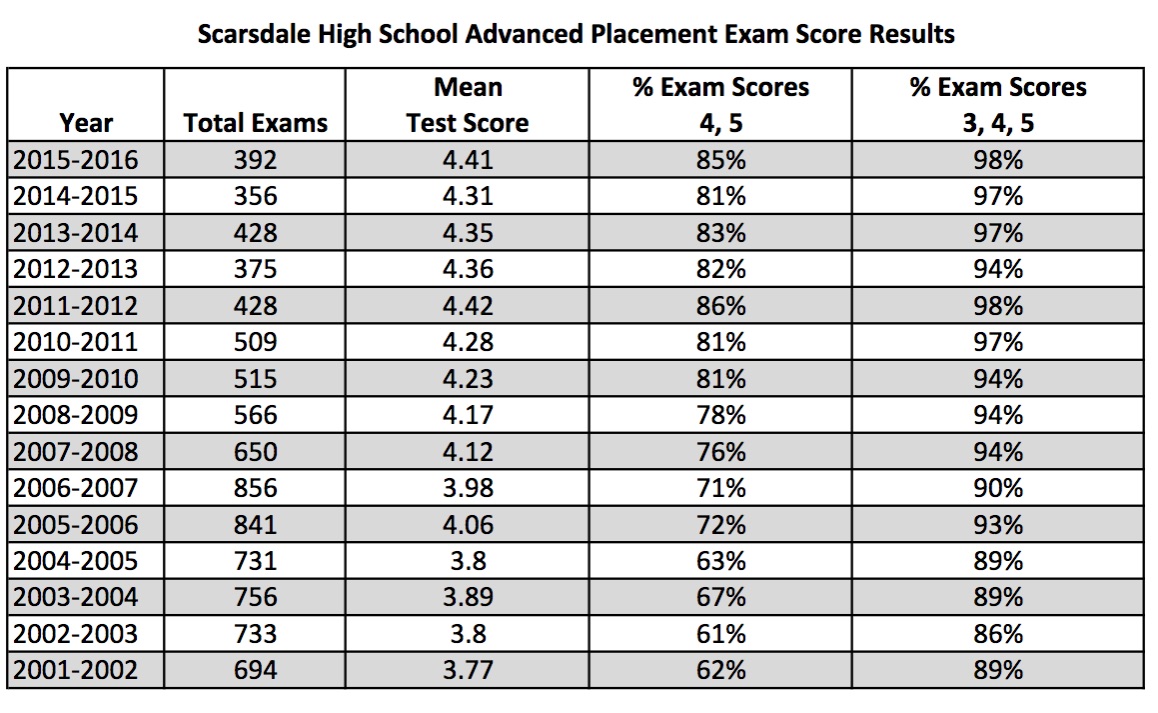 And despite Scarsdale's move to an AT rather than AP curriculum, Scarsdale students perform exceptionally well on AP tests. In fact, 98% of Scarsdale students received scores of 3,4,5 for the 2015-16 school year.
And despite Scarsdale's move to an AT rather than AP curriculum, Scarsdale students perform exceptionally well on AP tests. In fact, 98% of Scarsdale students received scores of 3,4,5 for the 2015-16 school year.
Looking ahead to students' senior year and beyond, Ms. Shain points out that Scarsdale's College Data continues to be excellent, with 63% of graduates accepted to the most selective colleges. She says, "Many selective private institutions tell us they are nowhere close.... You cannot have such outcomes without a strong K-12 system."
Water Safety
District water is not testing as well as district students. Lead levels in 19% of 368 district school sinks are higher than acceptable. Assistant Superintendent for Business and Facilities Stuart Mattey outlined results of water testing that was communicated via email to distract families last week. Continuing the work of last spring which saw the testing of all water fountains, Scarsdale Schools has completed a second round of testing which targeted 368 sinks and other water outlets. Of that number, 69 (19%) came in above the recommended threshold.
According to the CDC, "Lead found in tap water usually comes from the corrosion of older fixtures or from the solder that connects pipes. When water sits in leaded pipes for several hours, lead can leach into the water supply."
Filters will be put in place, and in the meantime signs at each affected outlet warn "Handwashing Only."
Mr. Mattey reported that the total cost of filters and maintenance going forward will add about $32,000 annually to the budget. But in Dr. Hagerman's words, "The dollars are minimal compared to the other impact; we're committed to getting this taken care of as quickly as possible."
Head Lice
Eric Rauschenbach, Director of Special Education and Student Services, updated the Board on the latest policy updates, beginning with the issue with the "ick factor: lice! Fortunately, although there are always occasional incidents, the district has had no major outbreaks for some time. Still they are a nuisance, so the latest policy identifies three goals in dealing with this issue: 1) decrease absenteeism, 2) support families in their efforts to control and eliminate lice, and 3) maintain student privacy.
The main adjustment in the policy comes from the American Academy of Pediatrics which rejects the exclusion of students infested with lice from school. Mr. Rauschenbach explained that requiring a child to leave class is stigmatizing, and incidence of lice transference is fairly low in a classroom setting. Furthermore, it qualifies as a child civil right to have access to education when there is no public health risk.
Therefore, although a student's parents will be notified of any finding of lice, and may be required to begin treatment before returning the student to school, there will generally be no need to remove the student immediately. School nurses will offer guidance, information and resources to support parents in managing the situation.
The AAP also discourages the practice of widespread lice screenings, preferring parental observation instead. However, as there is support in the community for PTA-sponsored checks, this practice will be allowed to continue subject to regulations ensuring confidentiality, parent notification, and the opportunity for parent opt-out.
Concussions
The more serious issue of Concussion Management has also been under review and updated to reflect current best practices. This involved adding an additional day of recovery t o the Return to Play protocol, and clarifying that the District Physician is the only authority who can clear students to return to physical activity. Additionally, there will be a higher level of caution exercised in the case of multiple concussion, which is in line with the latest research.
o the Return to Play protocol, and clarifying that the District Physician is the only authority who can clear students to return to physical activity. Additionally, there will be a higher level of caution exercised in the case of multiple concussion, which is in line with the latest research.
School Board Member Nina asked, "What is the administration doing to educate our parents and students that this is the procedure we will all follow without exception?" Mr. Rauschenbach replied that all coaches and teams go through the policy before each season and it is part of the health curriculum as well. In addition, every athlete must have a baseline neurologic function test done at the beginning of the season for use as a comparison after any possible concussion.
Watch the meeting online here.
Have comments? Please include your name and we will be happy to post them.
Grease on Stage at SHS November 18-20
- Details
- Written by: Joanne Wallenstein
- Hits: 7369
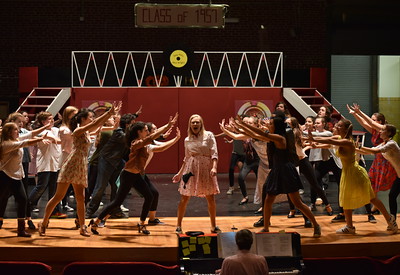 The Scarsdale High School Drama Club will present Grease on November 18, 19 and 20 in the high school auditorium. The musical features a large cast and is directed by Barbara Malecki.
The Scarsdale High School Drama Club will present Grease on November 18, 19 and 20 in the high school auditorium. The musical features a large cast and is directed by Barbara Malecki.
The play if appropriate for everyone in the family and takes place in 1959, when Rydell High School's senior class is in rare form. The too-cool-for-school "Burger Palace Boys" are stealing hub-caps and acting tough and their gum-snapping, chain-smoking "Pink Ladies" are looking hot in bobby sox and pedal pushers.
The 1950s high school dream is about to explode in this rollicking musical that is both an homage to the idealism of the fifties and a satire of high schoolers' age-old desire to be provocative and rebellious. At the heart of the story is the romance between hot-rodding gangster Danny Zuko and the sweet new girl in town, Sandy Dumbrowski. They had a secret romance in summer, but now back in the context of school, peer-pressure and cliques make their love a bit more complicated. Can Danny maintain his cool dude status and still get make demure Sandy his girl? The whole gang sings and dances around Danny and Sandy's romance, through such hit songs as "Greased Lightnin'", "We Go Together", and "Mooning", recalling the music of Buddy Holly, Little Richard and Elvis Presley that became the soundtrack of a generation. Starting off with an eight-year Broadway run, Grease is among the world's most popular musicals and has a cult-like following, especially among teens!
The performances will be in the Scarsdale High School auditorium on November 18th and 19th at 7:30 and November 20th at 2:00.
Tickets are available at SHSGrease.eventbrite.com or at the door.
Grease Cast List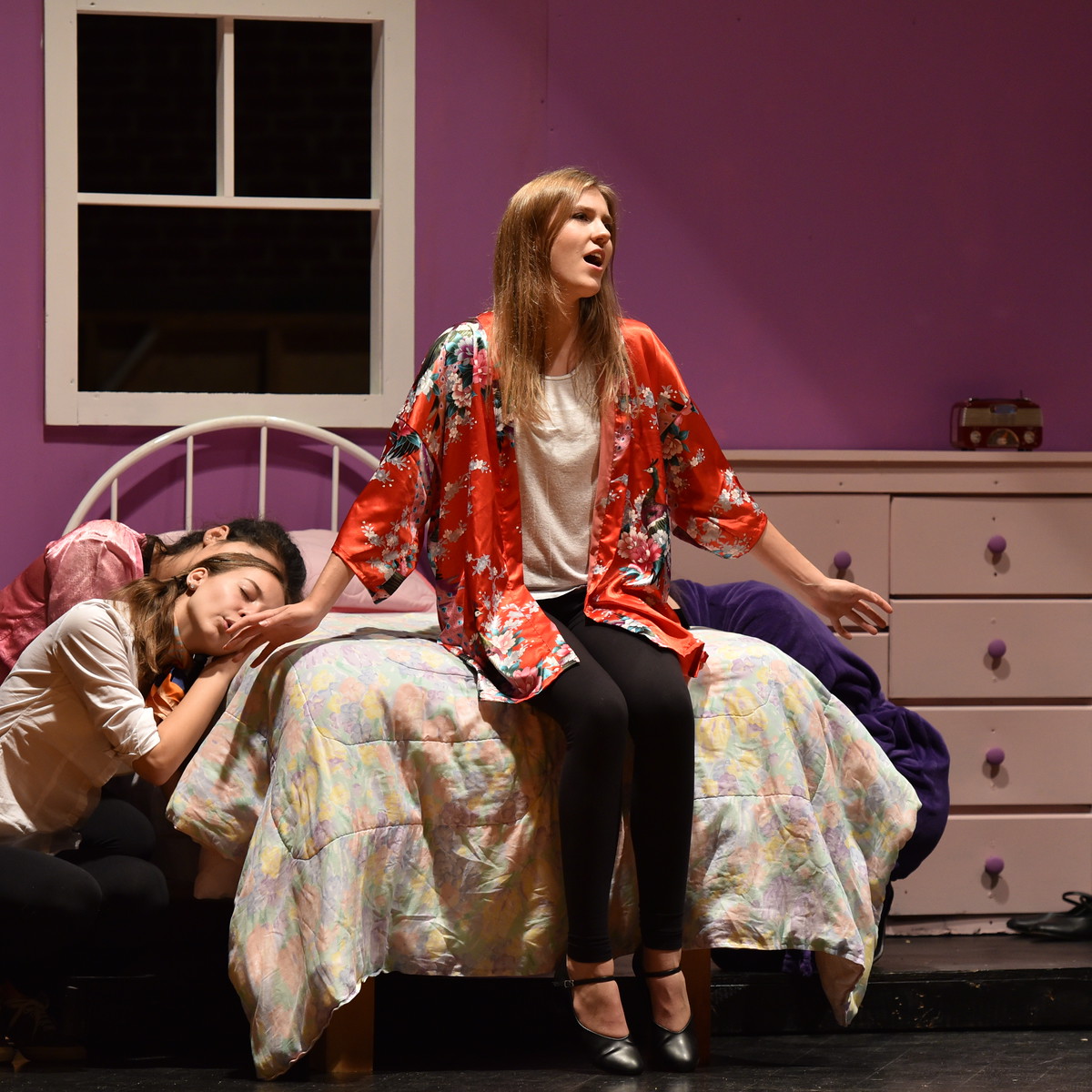
Danny- Robby Chappell
Sandy- Sophia Roth
Rizzo- Alexa Trujillo
Kenickie- Matt Kutzin
Frenchy- Jenna Orrico
Doody- Sofus Rose
Marty- Morgan Cochrane
Jan- Camila Tardif
Roger- Craig Carroll
Vince- David D'Silva
Sonny- Gabriel Lesser
Patty- Gabby Kauffman
Eugene- Jacob Binyaminov
Cha-Cha- Lena Proctor
Miss Lynch- Dahlia Gopstein
Blanche- Talli Lesser
Jazzy- Gracey Jones
Dance Captains- Perri Thaler, Ava Kashar
Featured Dancers- Margaret Kantor, Catherine Zhao, Daniella Ashman, Anaya Barmecha
Featured Singers- Jessica Byers, Hannah Lewis, Cassie Davis, Izzy Bailey
Voices- Daniella Ashman (Sheila), David D'Silva (Hero), Hudson Jakubowicz (Scientist)
Ensemble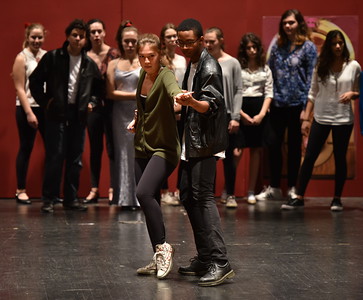
Zoya Binyaminov
Lucy Cecil
Kelsy Hogan
Samantha Lawless
Jamie Robelon
Katie Nova
Amelia Horney
Hannah Glickenhaus
Lexy Feldschuh
Hudson Jakubowicz
Mariana Vieira
Rose Hanish
Aimee Azambuia-Skoupy
Gabriella Rub
Julia Halligan
Melissa Cohen
Lisa Thurman
Aisling Doherty
Miku Morikuni
Photos by Jon Thaler - see more here:










